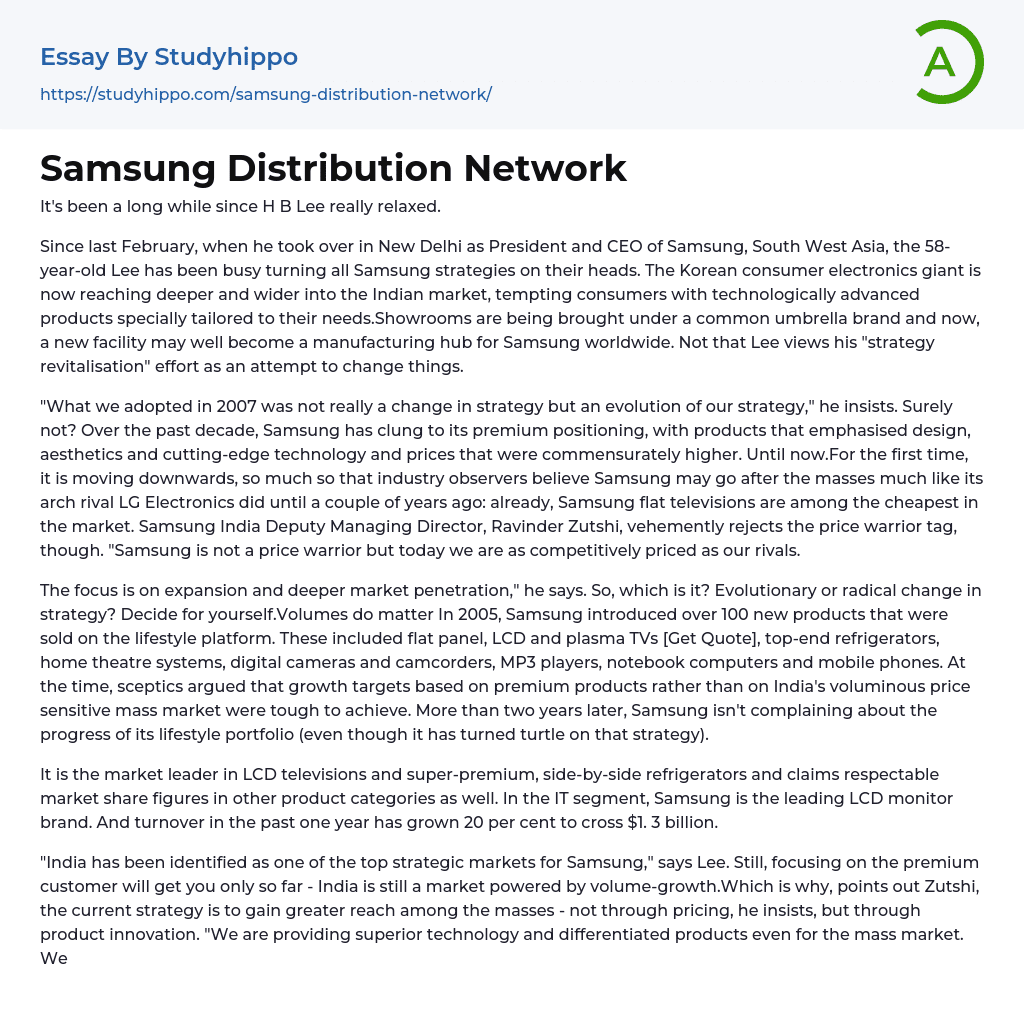It's been a long while since H B Lee really relaxed.
Since last February, when he took over in New Delhi as President and CEO of Samsung, South West Asia, the 58-year-old Lee has been busy turning all Samsung strategies on their heads. The Korean consumer electronics giant is now reaching deeper and wider into the Indian market, tempting consumers with technologically advanced products specially tailored to their needs.Showrooms are being brought under a common umbrella brand and now, a new facility may well become a manufacturing hub for Samsung worldwide. Not that Lee views his "strategy revitalisation" effort as an attempt to change things.
"What we adopted in 2007 was not really a change in strategy but an evolution of our strategy," he insists. Surely not? Over the past decade, Samsung has clung to its premium positioning, with product
...s that emphasised design, aesthetics and cutting-edge technology and prices that were commensurately higher. Until now.For the first time, it is moving downwards, so much so that industry observers believe Samsung may go after the masses much like its arch rival LG Electronics did until a couple of years ago: already, Samsung flat televisions are among the cheapest in the market. Samsung India Deputy Managing Director, Ravinder Zutshi, vehemently rejects the price warrior tag, though. "Samsung is not a price warrior but today we are as competitively priced as our rivals.
The focus is on expansion and deeper market penetration," he says. So, which is it? Evolutionary or radical change in strategy? Decide for yourself.Volumes do matter In 2005, Samsung introduced over 100 new products that were sold on the lifestyle platform. These included flat panel,
LCD and plasma TVs [Get Quote], top-end refrigerators, home theatre systems, digital cameras and camcorders, MP3 players, notebook computers and mobile phones. At the time, sceptics argued that growth targets based on premium products rather than on India's voluminous price sensitive mass market were tough to achieve. More than two years later, Samsung isn't complaining about the progress of its lifestyle portfolio (even though it has turned turtle on that strategy).
It is the market leader in LCD televisions and super-premium, side-by-side refrigerators and claims respectable market share figures in other product categories as well. In the IT segment, Samsung is the leading LCD monitor brand. And turnover in the past one year has grown 20 per cent to cross $1. 3 billion.
"India has been identified as one of the top strategic markets for Samsung," says Lee. Still, focusing on the premium customer will get you only so far - India is still a market powered by volume-growth.Which is why, points out Zutshi, the current strategy is to gain greater reach among the masses - not through pricing, he insists, but through product innovation. "We are providing superior technology and differentiated products even for the mass market. We are aiming at market leadership not only in the premium category of products but also mass categories like flat televisions," says Zutshi.
In other words, innovation is no longer confined to top-end products. Instead, Samsung is rolling out its technological improvements even in mass, volume-driven categories.
- Wal-Mart essays
- Discover essays
- Advertisement essays
- Advertising essays
- Anheuser-busch essays
- Audience Theory essays
- Brand essays
- Brands essays
- Competitor Analysis essays
- Consumer essays
- Detergent essays
- Marketing Management essays
- Marketing Mix essays
- Marketing Plan essays
- Marketing Research essays
- Marketing Strategy essays
- New Product Development essays
- Point Of Sale essays
- Price essays
- Procurement essays
- Product essays
- Product Differentiation essays
- Product Placement essays
- Promotion essays
- Promotion And Marketing Communications essays
- Research Design essays
- Retailing essays
- Trademark essays
- Animal Abuse essays
- Cats Vs Dogs essays
- Distribution essays
- Large Animals essays
- Mouse essays
- Poultry essays
- Rabbit essays
- Adidas essays
- Amazon essays
- Apple essays
- Bmw essays
- British Airways essays
- Burger King essays
- Coca-Cola essays
- Company essays
- Costco essays
- Dell essays
- Ebay essays
- Enron essays
- Facebook essays
- Ford Motor Company essays
- Gap essays




